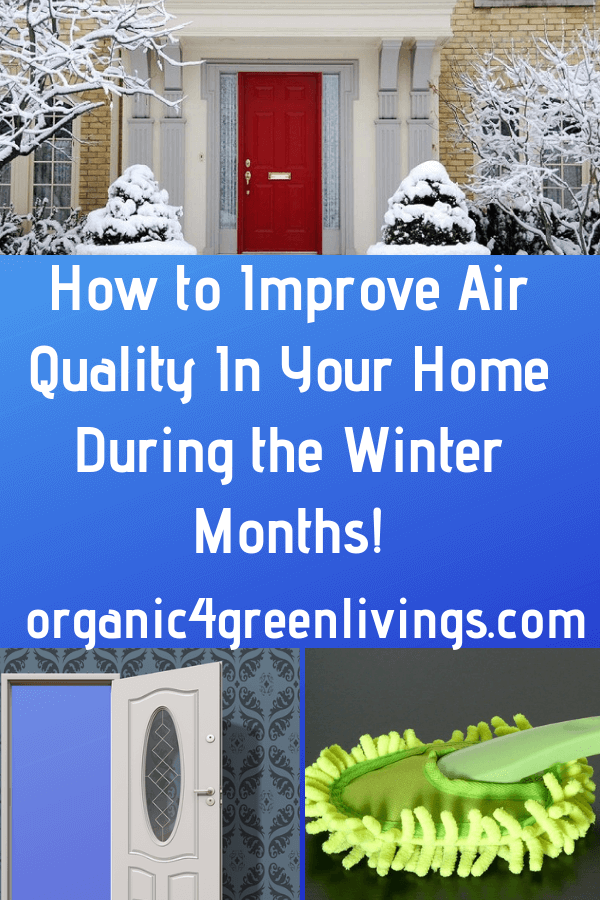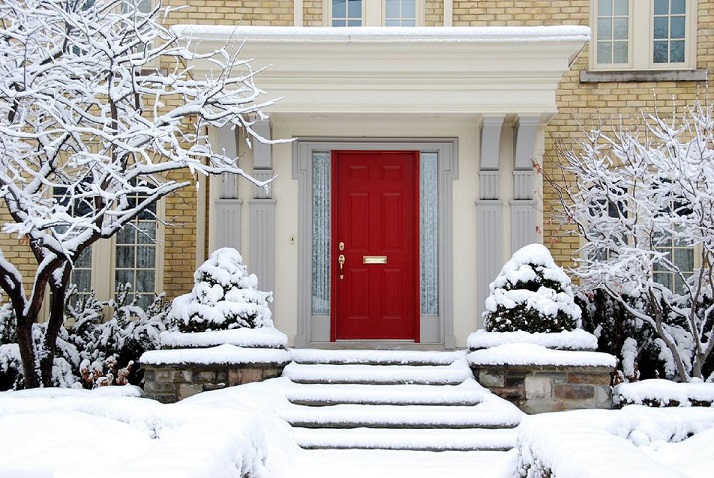How Indoor Air Quality Worsens During the Winter
Winter brings shorter days and colder weather, and with cooler temperatures comes less time spent outdoors and more time spent cozening up inside. We run our heaters and fireplaces to keep warm, and seal up any cold drafts blowing into our homes to help reduce energy costs. While this keeps us comfortable, it also closes off air circulation and traps harmful indoor air pollutants. These pollutants build up over time and worsen your home’s indoor air quality, which negatively impacts your health.
Below are three air pollutants that worsen in the winter months, and what you can do to improve your home’s air quality this winter season.

1. Dust
Dust naturally builds up in the home from dust mites, pet dander, dead skin cells, fibers from furniture and carpet, and outdoor sources, according to a study by the Environmental Science and Technology Journal. As temperatures drop, we tend to seal up our homes from cold drafts and fire up the furnace or chimney to keep warm. Too much dust build-up can lead to respiratory illnesses and other health concerns, such as worsening allergies. Children, the elderly, and those with compromised immune systems or chronic respiratory illnesses will feel the effects of dust the most. Certain parts of the country are more prone to dust than others, such as the Southwest where dry, arid climates are more common.
Although dust accumulation is inevitable and impossible to avoid there are ways to improve the dust pollutants in your home.
Steps you can take to help reduce dust in your home during the cold months.
- First, remember to replace your furnace filter regularly. Standard pleated filters will need replacing every 3-4 months, depending on usage and the amount of dust and allergens in your home. The cheaper the filter, the more often it will need replacing.
- Second, be sure to dust and vacuum more frequently. Homes with carpet will accumulate more dust, as dust mites and other allergens become trapped in carpet fibers and outdoor dust is tracked in from shoes and clothing.
- Third, consider investing in an air purifier with a HEPA filter. Some purifiers are designed to specifically filter dust and other allergens, filling your home with cleaner, healthier air.
2. Mold
Because winter air is typically drier than at other times of the year, you might think that mold is not as big a problem during colder months. However, considering that you spend more time indoors with your home sealed from the chilly outdoor air, you should continue to be vigilant about mold growth. Mold thrives in warm and humid environments, such as your bathroom and kitchen. When you cook or bathe and steam accumulates, you run the risk of developing mold as a result of poorer air ventilation and warmer air from your heater circulating in your home. Condensation can also collect on closed windows when steam is generated from cooking or showering, increasing the likelihood of mold formation. Much like dust, mold poses several health risks such as itchy throat, watery eyes, coughing, or allergies.
There are steps you can take to decrease the risk of mold growing in your home during the cold months.
- First, be sure to run your stove’s exhaust hood while cooking to help get rid of the steam created.
- Similarly, run your bathroom extractor fan when showering or bathing to remove excess moisture generated by the hot water.
- Finally, remember to occasionally open a window or door to help fresh air circulate throughout your home. If you live in a place where winters are wet, consider getting a dehumidifier to help control the humidity levels in your home.

3. Carbon Monoxide
As frigid winter weather rolls in, our thermostats are set to warmer and warmer temperatures. Furnaces and fireplaces are great ways to keep your home cozy during the chilly months, but they can also become a dangerous source of carbon monoxide. Poorly ventilated homes are at greater risk of accumulating lethal levels of the gas. According to the Centers for Disease Control, carbon monoxide poisoning results in over 400 deaths a year. Carbon monoxide poisonings and deaths spike in the winter, when furnaces, fireplaces, and portable heaters run the most, and often in spaces with poor ventilation. As mentioned earlier, we tend to seal our homes from cold winter weather, making it difficult for carbon monoxide to escape. Symptoms of CO poisoning include headache, dizziness, and nausea.
Carbon monoxide poisoning, while scary, is totally preventable.
- First, be sure to install carbon monoxide detectors in every level of your home.
- Remember to check and replace their batteries when necessary.
- You might need to warm up your car in colder temperatures, but never leave your vehicle running inside a garage, as lethal levels of CO can build rapidly.
- Finally, have your heating appliances professionally serviced before the cold season begins, and never heat your home with a gas oven or other gas burning device. Chimneys should also always be properly ventilated.
Indoor air quality typically worsens in the winter months, but now you’re armed with knowledge on how to keep you and your family breathing healthy air no matter the weather outside.
Do you have any ideas on how to improve indoor air quality that I haven’t mentioned? If so please share them with us in the comment section.
Share this articles to help spread the word of health and wellness to every one we can.
